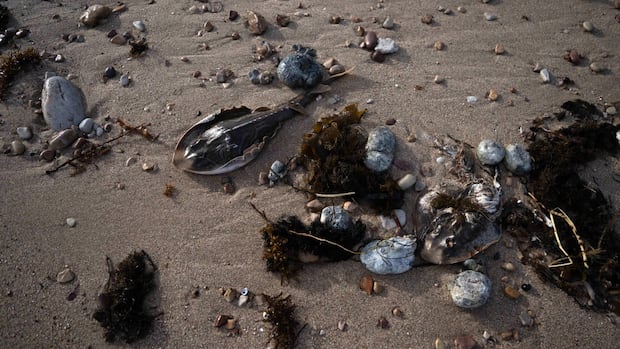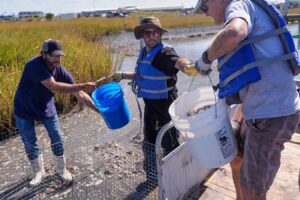
A massive outbreak of toxic algae off South Australia, which has devastated hundreds of species of marine life and disrupted local tourism and fishing, is a “natural disaster,” state Premier Peter Malinauskas said on Tuesday.
“I want to be really clear about this. This is a natural disaster,” Malinauskas said. “I think politicians can do themselves a disservice when they get caught up in technicalities. This is a natural disaster. It should be acknowledged as such.”
The algal bloom, first detected in March, spans an area 4,500 square kilometres in size and has been aggravated by rising ocean temperatures, environment officials say. More than 400 different species of marine life have been killed off or died as a result of the algal bloom, Malinauskas said.
“It’s important to recognize that this is an unprecedented event,” he said. “We’ve never seen an algal bloom of this size and this scale in the history of our country’s coastline.”
Malinauskas announced a $12.5 million Cdn support package to tackle the outbreak, matching a package by the federal government. The combined $25 million would assist with cleanup efforts, research, and business support.
The toxic bloom has been caused by overgrowth of the Karenia mikimotoi algal species, which affects fish gills and sucks oxygen out of the water as it decomposes, the state’s Environment Department said. Contributing to its growth was a marine heat wave that started in 2024, when sea temperatures were about 2.5 C warmer than usual.
Michael Parsons, a marine science professor at Florida Gulf Coast University, said these blooms could get more common as climate change makes waters more hospitable to the toxic algae.
“One concern is that many of these harmful algal bloom species — especially in the temperate and subtropical waters — they really cannot handle the cold water temperatures of winter time as well,” Parsons said. “And so if we have milder autumn water temperatures, milder winter temperatures, we can see that these species can continue to bloom and continue to thrive into the winter months.”
A snapper washes up on an Adelaide beach on July 13. More than 400 different species of marine life have been killed off or died as a result of the algal bloom, the state’s premier says. (Tracey Nearmy/Getty Images)
Patrick Martone, a botany professor at the University of British Columbia, said increased rainfall from climate change also washes more land-based nutrients into the water, fuelling the growth of more blooms. Once a bloom has flourished, he said, all that can really be done is to leave it to die on its own.
“There’s no way for people to go in and filter out all of the water of all the algae that are living there,” Martone said. “So there’s just not a good solution, unfortunately.”
More than 13,850 dead animals, including sharks, rays and invertebrates, have been recorded by the public on the iNaturalist app. The bloom has impacted tourism and forced oyster and mussel farms to temporarily shut down due to a waterborne toxin caused by the algae, local media said.
Parsons said the bloom could have prolonged effects on the local ecosystem, as toxins from the algae make their way up the food chain. Further, the bacteria required to break down this much dead sea life can drain oxygen from the surrounding waters, causing further deaths.
“We see this with other harmful algal bloom species where the impacts may last for years as the fish populations recover from those impacts,” he said.
Murray Watt, Australia’s environment minister, said on Monday the algal bloom was a “very serious environmental event,” but he stopped short of declaring it a national disaster, which would allow for greater federal support.





